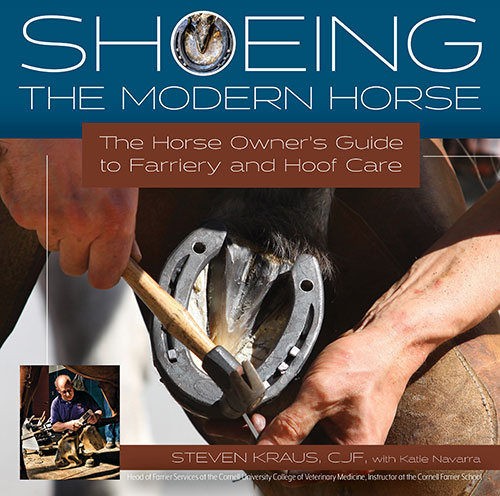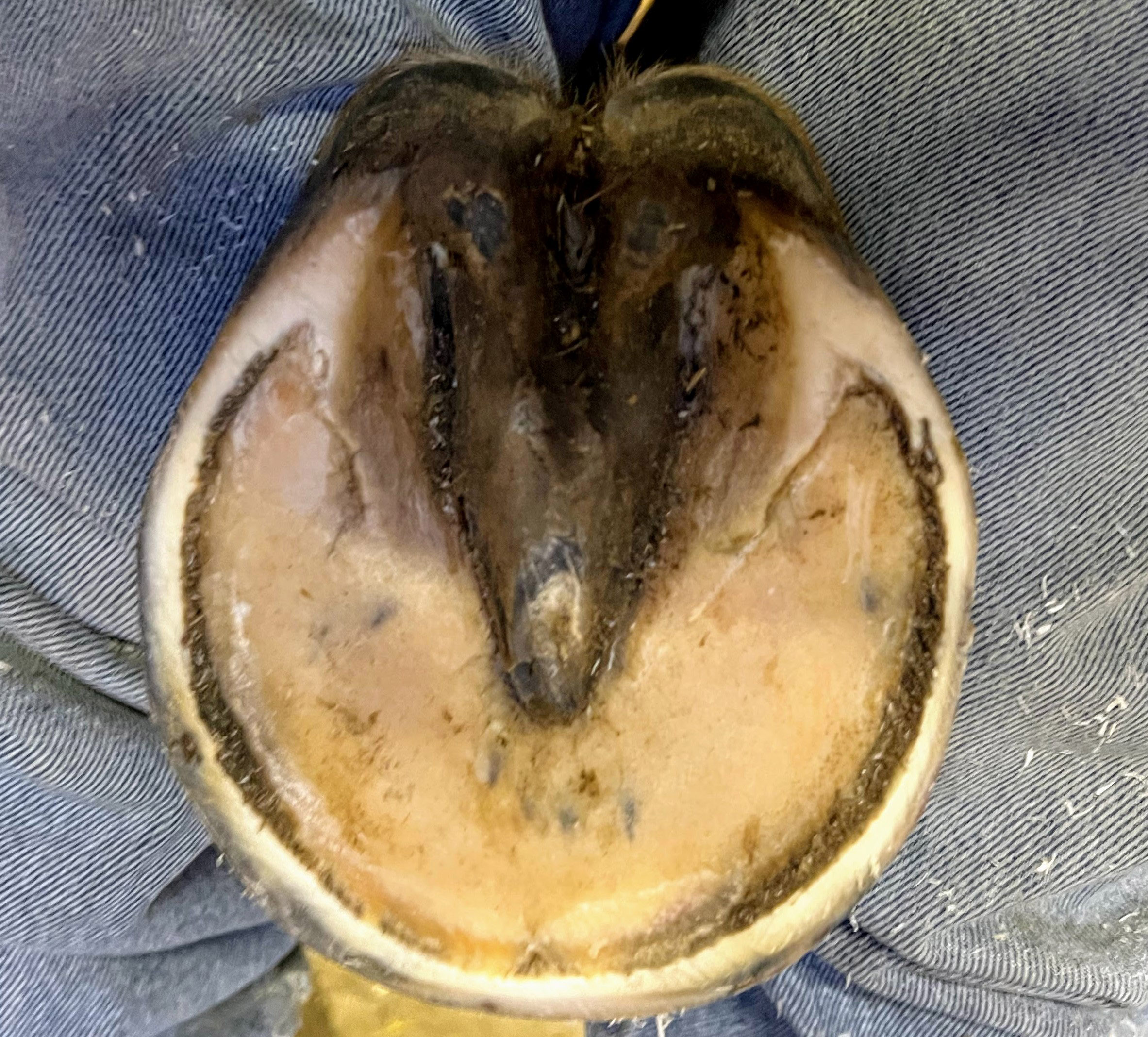
By Steven Kraus, CJF, with Katie Navarra
To shoe or not to shoe? If you’ve ever wondered which is better for your horse, you’re not alone.
The internet is full of opinions for you to consider. People have strong beliefs on both sides of the debate, which has created confusion and philosophical disputes rather than focusing on what is best for the modern horse.
Rather than ask, Are shoes necessary? or Is going barefoot better than being shod?, think of each horse as an individual. You will find the best answer for any horse when you take this approach. Horses live in diverse environments and are in many types of work, which contribute to deciding the best option for each horse.
With that in mind, it’s impractical to think that one method of hoof care is the only way to take care of all horses’ feet. Horseshoes may all look the same in the back of your farrier’s truck, but there is no such thing as one method or one horseshoe for all horses. “Cookie cutter” style shoeing or trimming does not work. Whether you choose to leave a horse barefoot, or use a shoe, trimming is the foundation of your horse’s hoof care.
Making Objective Observations
Observation and analysis of each horse, and not emotions, must guide the decision-making process to determine the best management of any horse. Good horsemanship, such as knowing the horse, his function, how to properly train, care for and use him offers the best answer in the barefoot versus shoeing debate. Often, there is more than one solution to consider, and the decision of which method to use should be based on facts and data. The WIDTH Protocol (see below) can establish if any horse is a good candidate to remain barefoot or is better served with horseshoes from an objective rather than subjective point of view. This protocol was developed using my observations working on horses in the central New York State region, shoeing almost 250,000 hooves over a nearly 50-year career. Ask yourself the following questions:
Work: What Does the Horse Do?
There are a multitude of ways horses are kept and used. Some are highly competitive, others perform in harsh environments, and some spend most of their time on turnout doing nothing at all. Most horses live somewhere between. Considering how often the horse works, the surface he works on, and his natural hoof quality are all part of the equation.

Intensity: How Hard Does the Horse Regularly Work?
Intensity refers to force or power transmitted to the ground for propulsion. Think of intensity as tires on a tractor. Smooth tires don’t get as good grip as those with lugs. The same is true for shoes. A dressage horse working in collection, a barrel racer running a pattern, or a draft horse pulling a cart all need traction. Remaining barefoot doesn’t transfer horsepower to the ground as well as shoes.
Duration: How Many Hours or Miles Does the Horse Regularly Work?
The frequency and length of rides help determine if a horse needs shoes. Those in regular training and competition, or endurance horses that cover a lot of ground, may need shoes to prevent the hooves from wearing too quickly between visits. It’s important to ask, “Will a horse wear his feet faster than he can push out new growth to replace that worn hoof?”
Terrain: How Hard Is the Surface and Is Traction Needed?
Climate and geography make for a wide range of soil types and moisture conditions that affect hooves. A horse’s hooves can adapt to the environment he lives in, but it is gradual. Some environments change too rapidly for a horse’s foot to adjust on its own. Those could be seasonal weather variations such as extremely dry to exceptionally wet ground or frequent changes in performance venues with varied footing types. Horses that wear shoes while living in snowy, icy climates can have traction devices added to the shoe to limit slipping.
Horse: What’s the Breed, Conformation, Health, Care, and Use?
Heavier-boned horses tend to be thicker-skinned and have tougher feet whereas some light-boned breeds have genetic predispositions for hoof problems.
For example, the lighter bone structure that gives Thoroughbreds speed is a finer structure but makes racehorses more susceptible to fractures than breeds with denser bones. Breeding choices significantly impact the strength of the hoof and its structures. Horses with poor conformation are likely to need support beyond trimming to prevent soft-tissue damage. Ignoring conformational defects in favor of achieving specific traits, such as color or athletic ability, carries through to offspring and can perpetuate bone and joint issues.
The individual horse’s conformation also impacts how forces from working are distributed up the legs. Crooked legs do not absorb impact as well as straight legs. These uneven forces can damage unprotected hooves in predictable ways and lead to the breakdown of bones and joints.
There are exceptions to every rule. There will always be a horse that does well barefoot regardless of his circumstances, but this animal is in the minority. A combination of good genetics, suitable habitat, and compatible selection for the activity allows certain horses to function well without shoes. However, missing even one of these criteria may be a deal-breaker for going shoeless. A mechanically correct trimming paired with a well-fitted shoe has a multiplier effect where the result is greater than a factor of one plus one equaling two. The combination offers exponential benefits that allow the horse to load evenly, move well, and remain sound.
This excerpt from Shoeing the Modern Horse by Steven Kraus, CJF, and Katie Navarra, is reprinted with permission from Trafalgar Square Books (www.HorseandRiderBooks.com).
There are more interesting articles and books in our sections on Health & Education and Books.

































